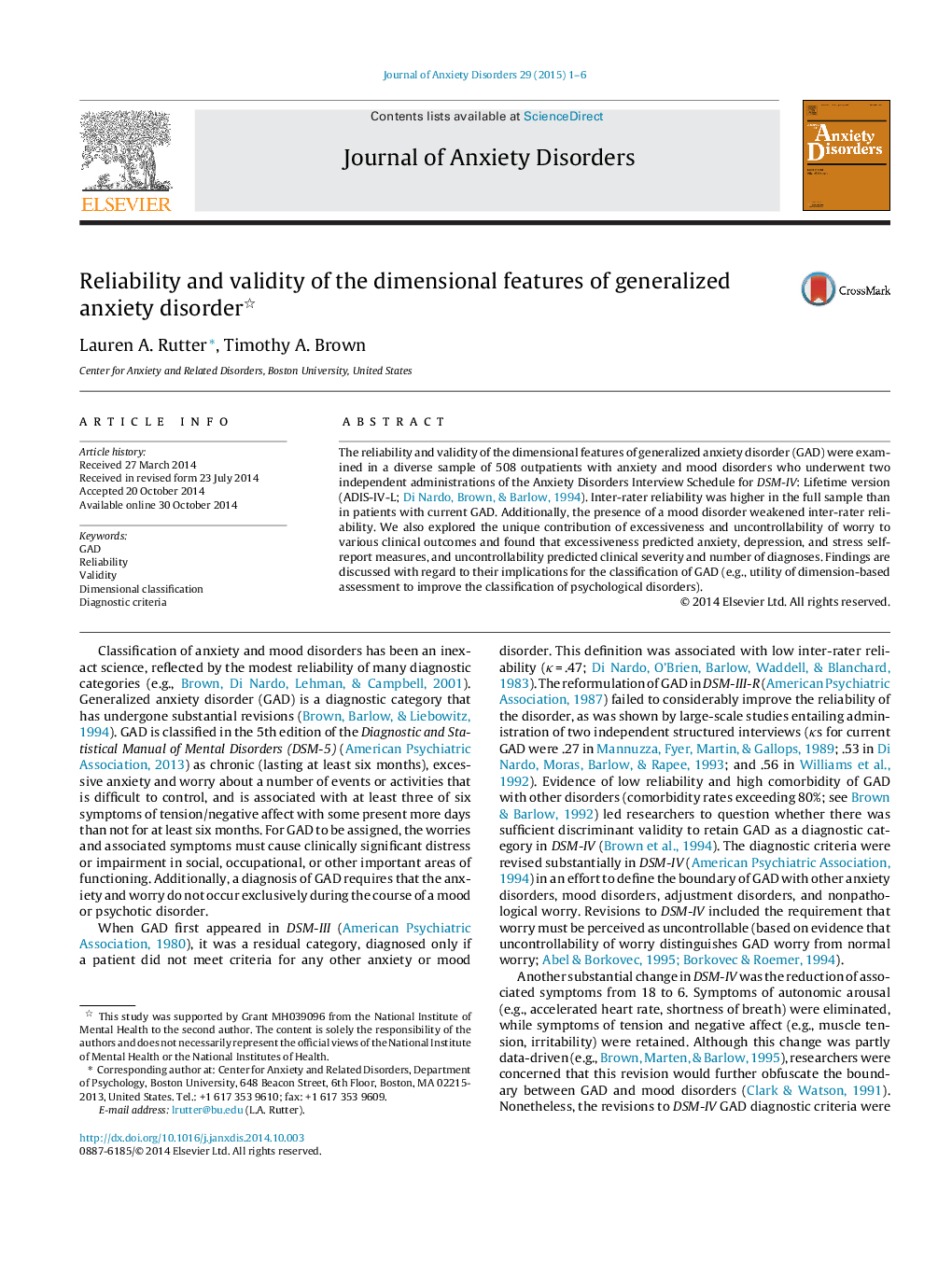| Article ID | Journal | Published Year | Pages | File Type |
|---|---|---|---|---|
| 909296 | Journal of Anxiety Disorders | 2015 | 6 Pages |
•Reliability of GAD features was good to excellent in the full sample.•Reliability of GAD features was higher in the full sample than in GAD cases only.•Comorbid mood disorders and longer interview separations lowered reliability.•Key diagnostic features of excessive and uncontrollable worry were highly correlated.•These features contributed uniquely but modestly to prediction of clinical outcomes.
The reliability and validity of the dimensional features of generalized anxiety disorder (GAD) were examined in a diverse sample of 508 outpatients with anxiety and mood disorders who underwent two independent administrations of the Anxiety Disorders Interview Schedule for DSM-IV: Lifetime version (ADIS-IV-L; Di Nardo, Brown, & Barlow, 1994). Inter-rater reliability was higher in the full sample than in patients with current GAD. Additionally, the presence of a mood disorder weakened inter-rater reliability. We also explored the unique contribution of excessiveness and uncontrollability of worry to various clinical outcomes and found that excessiveness predicted anxiety, depression, and stress self-report measures, and uncontrollability predicted clinical severity and number of diagnoses. Findings are discussed with regard to their implications for the classification of GAD (e.g., utility of dimension-based assessment to improve the classification of psychological disorders).
